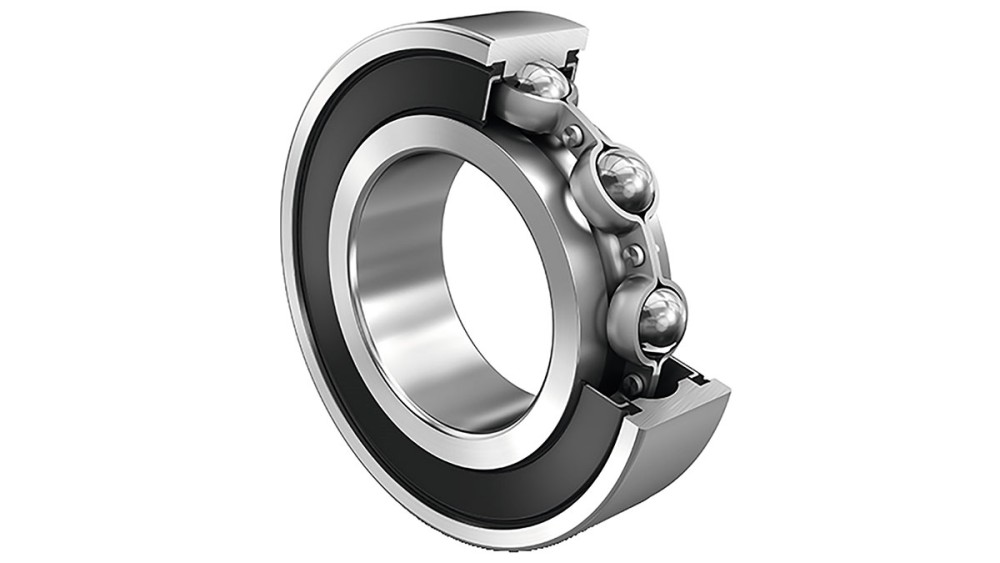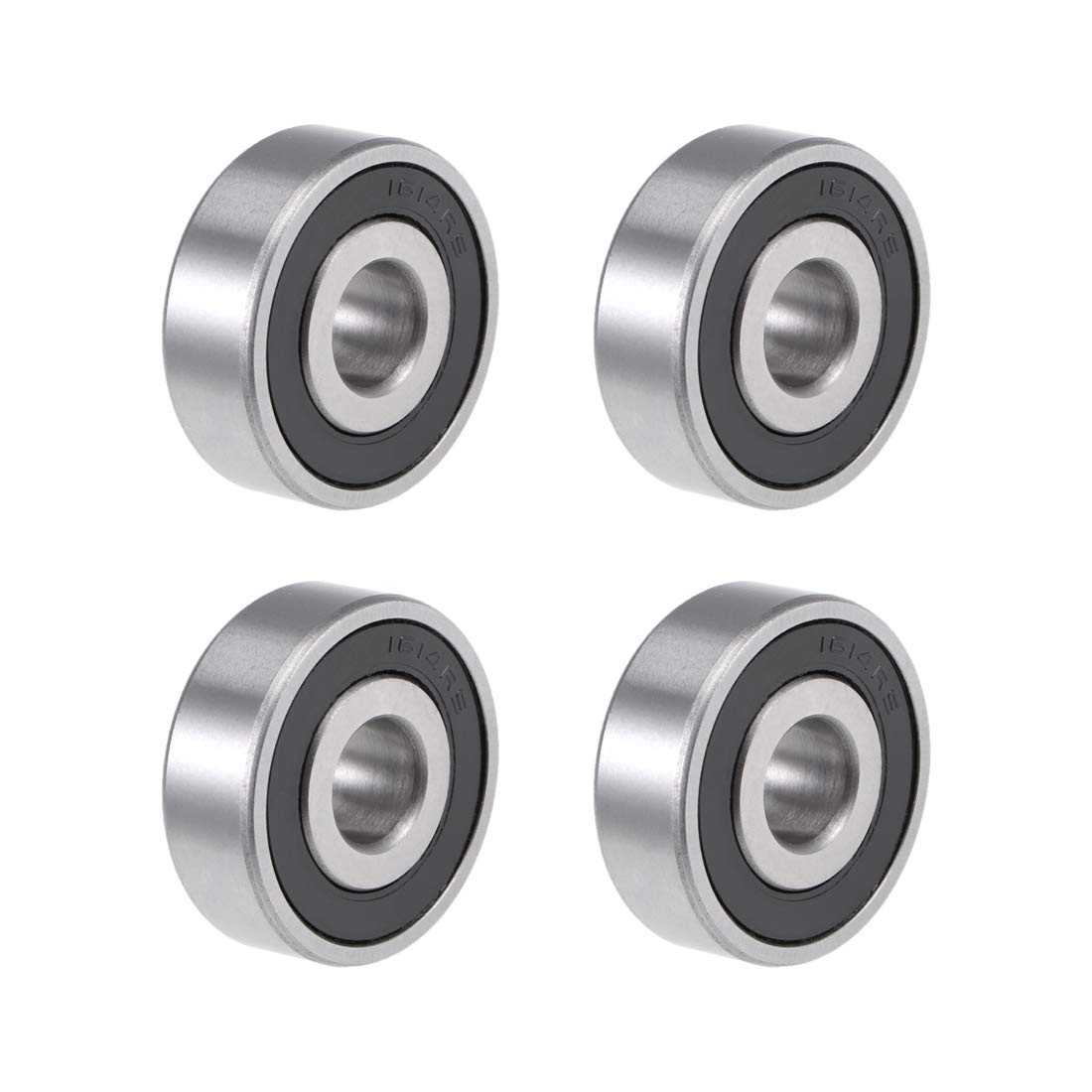What are the signs of wear or damage in deep groove ball bearings, and when should they be replaced?
Deep groove ball bearings, like any mechanical component, can experience wear or damage over time. It is important to identify the signs of wear or damage in bearings and know when they should be replaced to prevent further issues. Here’s a detailed explanation of the signs of wear or damage in deep groove ball bearings and when they should be replaced:
- Abnormal Noise:
- Excessive Vibration:
- Increased Temperature:
- Irregular or Uneven Operation:
- Visible Wear or Damage:
- Lubrication Issues:
- Operating Conditions:
Unusual noises, such as grinding, clicking, or rumbling sounds, can indicate bearing wear or damage. These noises may occur during operation and can be an indication of insufficient lubrication, misalignment, or the presence of foreign particles. If abnormal noise is detected, it is recommended to inspect the bearings promptly and replace them if necessary.
Excessive vibration during operation can be a sign of bearing wear or damage. Vibrations may occur due to misalignment, imbalance, or the presence of faulty bearings. If the vibration levels are unusually high and cannot be attributed to other factors, the bearings should be inspected and replaced if needed.
Significantly increased operating temperature of the bearings can indicate wear or damage. Excessive friction caused by worn-out or misaligned bearings can generate excessive heat. If the temperature of the bearings exceeds the recommended operating limits, it is advisable to investigate the cause and replace the bearings as necessary.
Irregular or uneven operation of the equipment or machinery can be a symptom of bearing wear or damage. This may manifest as erratic or jerky movements, decreased performance, or decreased efficiency. If such irregularities are observed, the bearings should be inspected to determine if replacement is required.
Physical inspection of the bearings can reveal visible signs of wear or damage. These signs may include pitting, rust formation, scoring, or discoloration on the bearing surfaces. Excessive wear or damage that affects the smooth rolling motion or integrity of the bearings should prompt immediate replacement.
Problems with lubrication, such as inadequate or contaminated lubricant, can contribute to bearing wear or damage. Insufficient lubrication can lead to increased friction, heat generation, and accelerated wear. If lubrication-related issues persist despite proper maintenance, it may be necessary to replace the bearings.
The operating conditions of the equipment or machinery can also influence the lifespan of deep groove ball bearings. Factors such as heavy loads, high speeds, extreme temperatures, exposure to corrosive environments, or prolonged use can accelerate wear or damage. In such demanding conditions, bearings may need to be replaced more frequently to ensure reliable operation.
It is important to note that the timing of bearing replacement depends on various factors, including the severity of wear or damage, the criticality of the application, and the manufacturer’s recommendations. Regular inspection and maintenance practices, as well as monitoring of the aforementioned signs, can help determine the appropriate timing for bearing replacement. Consulting with bearing manufacturers or maintenance professionals can provide valuable guidance in assessing the condition of deep groove ball bearings and making informed decisions regarding replacement.
In summary, signs of wear or damage in deep groove ball bearings include abnormal noise, excessive vibration, increased temperature, irregular or uneven operation, visible wear or damage, lubrication issues, and demanding operating conditions. Prompt replacement of bearings exhibiting these signs is essential to prevent further damage, avoid equipment failure, and ensure the continued smooth and reliable operation of machinery or equipment.
What are deep groove ball bearings and how are they used in various applications?
Deep groove ball bearings are a type of rolling element bearing that are widely used in various applications due to their versatility and performance. Here’s a detailed explanation of deep groove ball bearings and their applications:
- Description and Design:
- Radial Load Handling:
- Axial Load Capability:
- Low-Friction Operation:
- Wide Range of Applications:
- Automotive: Deep groove ball bearings are used in various automotive components, such as wheel hubs, alternators, starters, air conditioning compressors, and electric power steering systems.
- Industrial Machinery: They are widely utilized in industrial machinery, including electric motors, pumps, fans, conveyors, machine tools, printing presses, and textile equipment.
- Home Appliances: Deep groove ball bearings are found in appliances like washing machines, refrigerators, dishwashers, vacuum cleaners, and power tools.
- Electronics and Office Equipment: They are used in computer disk drives, printers, copiers, scanners, and other electronic and office equipment.
- Sports Equipment: Deep groove ball bearings are employed in applications like skateboards, bicycles, fitness equipment, and fishing reels.
Deep groove ball bearings consist of an inner ring, an outer ring, a cage, and a set of steel balls. The inner and outer rings have deep raceway grooves that enable the bearings to accommodate both radial and axial loads. The presence of the steel balls between the rings allows for smooth and low-friction rotation. Deep groove ball bearings are typically made of high-quality bearing steel and are available in various sizes and configurations to suit different applications.
Deep groove ball bearings excel at handling radial loads, which are forces perpendicular to the shaft. The deep raceway grooves distribute the load evenly along the rolling elements, enabling the bearings to support high radial loads. This makes them suitable for applications where the primary load is predominantly radial, such as electric motors, pumps, gearboxes, and conveyor systems.
While deep groove ball bearings are primarily designed for radial loads, they can also handle limited axial loads, which are forces parallel to the shaft. The presence of the steel balls allows for some axial load transmission. However, it’s important to note that the axial load capacity of deep groove ball bearings is lower compared to dedicated thrust bearings. Therefore, they are typically used in applications with moderate axial loads or in combination with other bearing types to support both radial and axial loads.
Deep groove ball bearings offer low-friction operation, thanks to the rolling contact between the steel balls and the raceway grooves. This reduces energy losses due to friction and enhances the overall efficiency of the system. The low-friction characteristics make deep groove ball bearings suitable for applications that require smooth and quiet operation, such as household appliances, automotive components, and precision machinery.
Deep groove ball bearings find applications in a wide range of industries and equipment, including:
In summary, deep groove ball bearings are versatile bearings that can handle radial loads and limited axial loads. They offer low-friction operation and are used in a wide range of applications across industries such as automotive, industrial machinery, home appliances, electronics, and sports equipment.
Can you provide insights into recent advancements in deep groove ball bearing technology?
Recent years have seen several advancements in deep groove ball bearing technology, driven by the constant pursuit of improved performance, durability, and efficiency. These advancements have been made possible through innovations in materials, manufacturing processes, and design techniques. Here are some insights into the recent advancements in deep groove ball bearing technology:
- Advanced Materials:
- Surface Engineering and Coatings:
- Improved Manufacturing Processes:
- Design Optimization:
- Sealing and Lubrication:
- Sensor Integration:
New materials and alloys have been developed to enhance the performance of deep groove ball bearings. For example, the use of high-performance steels and ceramics has gained popularity. These materials offer enhanced strength, corrosion resistance, and high-temperature capabilities, allowing deep groove ball bearings to operate in demanding environments with improved reliability and longevity.
Advancements in surface engineering and coatings have contributed to the performance of deep groove ball bearings. Innovative coating technologies such as diamond-like carbon (DLC) coatings and various nano-coatings can reduce friction, improve wear resistance, and enhance the overall efficiency of bearings. These coatings also provide protection against contaminants and extend the bearing’s operating life.
Manufacturing techniques have been refined to achieve higher precision and quality in deep groove ball bearings. Advanced machining processes, such as precision grinding and superfinishing, enable tighter tolerances and smoother surface finishes. This results in improved bearing performance, reduced noise levels, and enhanced operational efficiency.
Design optimization has played a significant role in recent advancements in deep groove ball bearing technology. Computer-aided design (CAD) and finite element analysis (FEA) tools have enabled engineers to optimize bearing geometries, load distribution, and cage designs. These advancements have led to improved load-carrying capacity, reduced friction, and enhanced overall performance of deep groove ball bearings.
Advancements in sealing and lubrication technologies have improved the reliability and maintenance requirements of deep groove ball bearings. Effective sealing mechanisms, such as contact seals or non-contact seals, provide better protection against contamination and moisture ingress, extending the bearing’s service life. Additionally, advancements in lubrication techniques, such as the use of advanced greases and solid lubricants, enhance the bearing’s efficiency and reduce friction.
Integration of sensors within deep groove ball bearings has emerged as a recent advancement. These sensors can monitor various parameters, such as temperature, vibration, and load, providing real-time data on bearing health and performance. This enables proactive maintenance and condition monitoring, allowing for timely interventions and preventing potential failures.
In summary, recent advancements in deep groove ball bearing technology have focused on the development of advanced materials, surface engineering and coatings, improved manufacturing processes, design optimization, sealing and lubrication techniques, as well as sensor integration. These advancements have resulted in deep groove ball bearings with enhanced performance, durability, and efficiency. As a result, industries across various sectors can benefit from these advancements, experiencing improved reliability, reduced maintenance, and optimized operational performance.
editor by CX 2024-04-16



